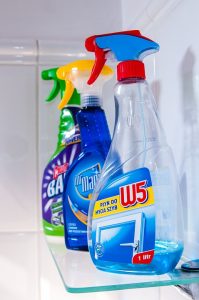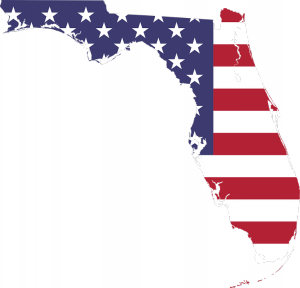Prices are Declining for California Workers Compensation Rates in 2019
During the year 2019, California Workers Compensation Rates are going to cost the business community less than in 2018. The average rate of $1.63 per $100 in payroll by Jan. 1 will be approximately 72 percent lower than when rates peaked in 2015. In 2015 the recommended rate was $2.81 per $100 in payroll. According to California Insurance Commissioner Dave Jones, “Cost savings in the workers’ compensation system have helped insurers and employers deserve to share in the cost savings through lower premiums,” This is the lowest rates for workers compensation insurance have been in the state of California in five years.

What is contributing to Lower California Workers Compensation Rates 2019?
California has some of the highest rates for workers comp in the country the California Workers Compensation Bureau WCIRB has pointed to a high frequency of permanent disability claims as a reason for higher costs. Also, California has a higher than average cost of handling claims and delivering benefits. This contributes to the state having higher rates for workers compensation premium. Businesses in the state of California spent $16.2 billion on workers’ compensation just last year.
In 2019, California Work Comp Rates are continuing to decrease for the fifth straight year. These declines occurred primarily because of reforms made to fight the opioid epidemic, low inflation for medical and pharmaceutical costs, and increased fraud investigations. Because of these efforts throughout the entire workers compensation system, the amount paid out for opioids in 2018 was nearly a fifth of what it was in 2013. This drop was from $15,687 to $3,204 per 100 claims, according to WCIRB (The California Workers Compensation Insurance Rating Bureau). A large part of the reason for the decrease in what the workers compensation system paid out for opioid prescriptions is because California enacted a program called CURES (Controlled Substance Utilization Review and Evaluation System). CURES is a database of Schedule II, III and IV controlled substance prescriptions dispensed in California serving the public health, regulatory oversight agencies, and law enforcement. The CURES Program requires dispensing pharmacies, clinics, or other dispensers of Schedule II through IV controlled substances to provide specified dispensing information to the Department of Justice on a weekly basis in a format approved and accepted by the DOJ. This has significantly decreased the amount of opioid abuse throughout the state and that has benefited the workers compensation system.

What can Business Owners do to continue saving on California Workers Compensation Rates 2019
California Workers Compensation Rates 2019 are decreasing for the fifth straight year. This represents a decrease of 72 percent over this time period, but businesses in California still pay more for workers comp coverage than nearly all states throughout the country. Because of these high rates, it is important to maximize savings in any way possible. Here are five ways business owners can alter the way they do business in order to save on commercial insurance.
Make sure your business is classified properly
Far too many businesses are classified improperly for purposes of workers compensation insurance. This is attributed to a number of reasons, but many times it is because a business owner rushes through the quoting process when purchasing Workmans Comp Insurance California. An insurance agent can only act upon the information they are given by the business owner when they are shopping for the best coverage to fit a business owners needs. If the business owner does not explain many intricacies of their business, the business may be classified improperly and pay more or less for coverage throughout the year. This mistake usually gets cleared during the end of term audit, but it can cause a business to owe additional premium. Even if the business over pays and is issued a refund, it means the business has tied up valuable cash flow in unnecessary premium payments throughout the year. These unnecessary payments could have been used on other more important business expenses.
Implement a Safety Program
A Safety Program can help limit the cost of workers compensation insurance in California because it will limit both the frequency and severity of claims. When you business has less claims and the claims you do have are small, the insurance carrier is more likely to offer your business a favorable rate for premium.
Start the Safety Program the day employees are hired
Safety Programs should be a part of your company culture. This should not start after a month in which a few accidents occur. Safety should be part of the training program from the moment an employee starts on the job. The more the business (especially the key employees) talk about safety, the more likely that message is to fester throughout the organization.
Add a Return-to-Work Program to your Safety Policy
A Return to Work Program can significantly impact your experience modification rating in a positive way. When an employee is hurt and not able to work they are much more likely to develop new habits outside of their daily work routine. The longer they stay off the job, the more likely the injured employee is to become long term unemployed. This can have a drastic impact on the experience modification rating of the business. Businesses that are able to get an employee back on the job, even in a limited capacity, are more likely to have those employees return to permanent work.
Communicate with your Insurance Carrier and Healthcare Provider
Communication is key when it comes to navigating the workers compensation system. This is true for the business owner, the injured worker, the insurance agent as well as the underwriter who represents the insurance carrier. The business owner has a responsibility to help the injured worker navigate the workers compensation system and get the care they deserve while not able to work. It is important to keep your agent in the loop throughout this process even though it is the responsibility of the carrier to administer the program. Keeping the agent in the loop can help in the unfortunate event that the carrier is not living up to their end of the bargain. If the agent knows about this process throughout, they can help hold the carrier accountable.

What are the Requirements for Workers Compensation Insurance Coverage in the State of California?
In California, all employers are required to purchase workers compensation coverage regardless of the number of employees. Sole Proprietors are not automatically included in coverage, but can elect to be included using the Acord 130 Application. Partners are automatically included on policies and they are not allowed to be exempt. Corporate Officers who happen to be the sole shareholder are excluded from coverage, but they have the ability to elect coverage if they so choose. All LLC Members who work within a business are included for coverage, but non-working LLC Members are excluded from coverage unless they elect to be covered using the Acord 130 form.
What are the Payroll Requirements for Business Owners in California?
According to California regulation, Sole Proprietors who elect to include themselves on workers comp coverage must use a minimum payroll amount of $52,000 and a maximum of $133,900 for rating purposes as of January First, 2019. Partners, Officers and LLC Members who do not excluded themselves from coverage must utilize a minimum payroll of $52,000 and a maximum of $133,900 for the purpose of rating workers comp premium.
 My Insurance Question is a blog published by the insurance experts at the Insurance Shop LLC. If you are in the market for any form of commercial insurance give us a call at 1-800-800-4864 or start a quote here: Start a Quote with The Insurance Shop
My Insurance Question is a blog published by the insurance experts at the Insurance Shop LLC. If you are in the market for any form of commercial insurance give us a call at 1-800-800-4864 or start a quote here: Start a Quote with The Insurance Shop




 Many within the industry in the state of Tennessee are complimenting the reforms made to the workers’ compensation system in 2013. These reforms especially contributed to a decrease in lost-time frequency. This means injured workers are spending less time off the job and are returning to full-time work more quickly and more often than in years past. In addition to a decrease in lost-time, both indemnity average cost per case and medical average cost per case have remained “
Many within the industry in the state of Tennessee are complimenting the reforms made to the workers’ compensation system in 2013. These reforms especially contributed to a decrease in lost-time frequency. This means injured workers are spending less time off the job and are returning to full-time work more quickly and more often than in years past. In addition to a decrease in lost-time, both indemnity average cost per case and medical average cost per case have remained “


 Workers’ Compensation Insurance is required by law for businesses in most states. So is General Liability in most industries. For that reason, these two policies are the bare minimum coverage a business needs to be in business. Now for a cash-strapped, seasonal, or start-up business; coming up with the initial payment to get coverage in place can be difficult. Because of this issue, many carriers have come up with alternative payment options for these necessary coverages. The most popular alternative payment option is
Workers’ Compensation Insurance is required by law for businesses in most states. So is General Liability in most industries. For that reason, these two policies are the bare minimum coverage a business needs to be in business. Now for a cash-strapped, seasonal, or start-up business; coming up with the initial payment to get coverage in place can be difficult. Because of this issue, many carriers have come up with alternative payment options for these necessary coverages. The most popular alternative payment option is 








